Summary
The distinctive car manufacturer Land Rover needed to translate its hallmark engineering and luxury style into the redesign of its global website. My focus was to create a vehicle configurator that fit styleguides, industry standards and technical constraints but also met expectations of customers and aspirants alike.
My role as the interaction designer in this effort included:
- Gathering requirements and early ideation through affinity diagramming
- Conducting the design exploration using iterative sketching
- Building storyboards and wireframes that illustrated engaging user interactions
- Identify decisions points in the journey to offer additional support, flexibility and personalization
Affinity Diagram of Requirements and Ideas
I traveled to the London office for briefing and a crash-course on the industry and the competition. I used the method of affinity diagramming in order to record and consolidate standards, requirements, needs and opportunities. In this way, I was quickly able to both ground myself in the details and identify open questions for further probing.
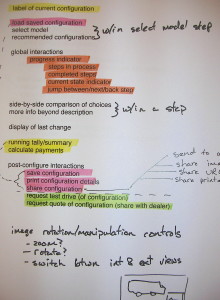 |
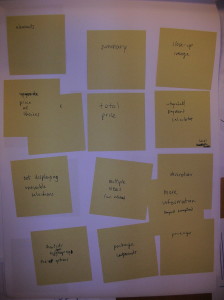
|
Engaging in Design Exploration
The design exploration involved sketching for a multiple iterations. Initially, I identified states of the system and blocked out areas of focus for key states. Soon I began exploring a variety of interaction paradigms and their implications on structure, functionality and content areas.
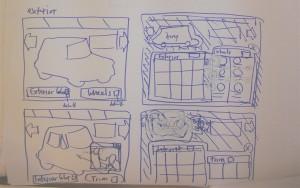 |
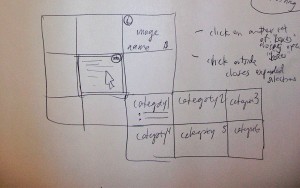 |
Building Storyboards
Feedback on interactions become increasingly important during the design process, so I constructed mid-fidelity wireframes and put together storyboards to display animated sequences. The copy and design elements provided the right mix to indicate the visual direction and still facilitate stakeholder input.
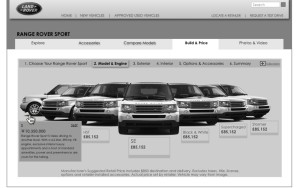 |
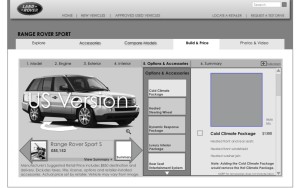 |
Execution and Evolution
As the project moved forward, additional technical constraints emerged that limited the fluidity in animation and overall interactivity. I worked to ensure that key features were still feasible—especially novel interactions that differentiated the configuration and reflected the brand.
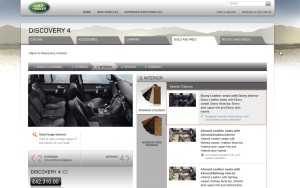 |
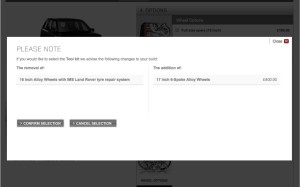 |
The final result launched with additional support, flexibility and personalization for consumers and brand loyalist alike. The appeal for these features was clear; they were highlighted and extended as the tech and business requirements evolved.